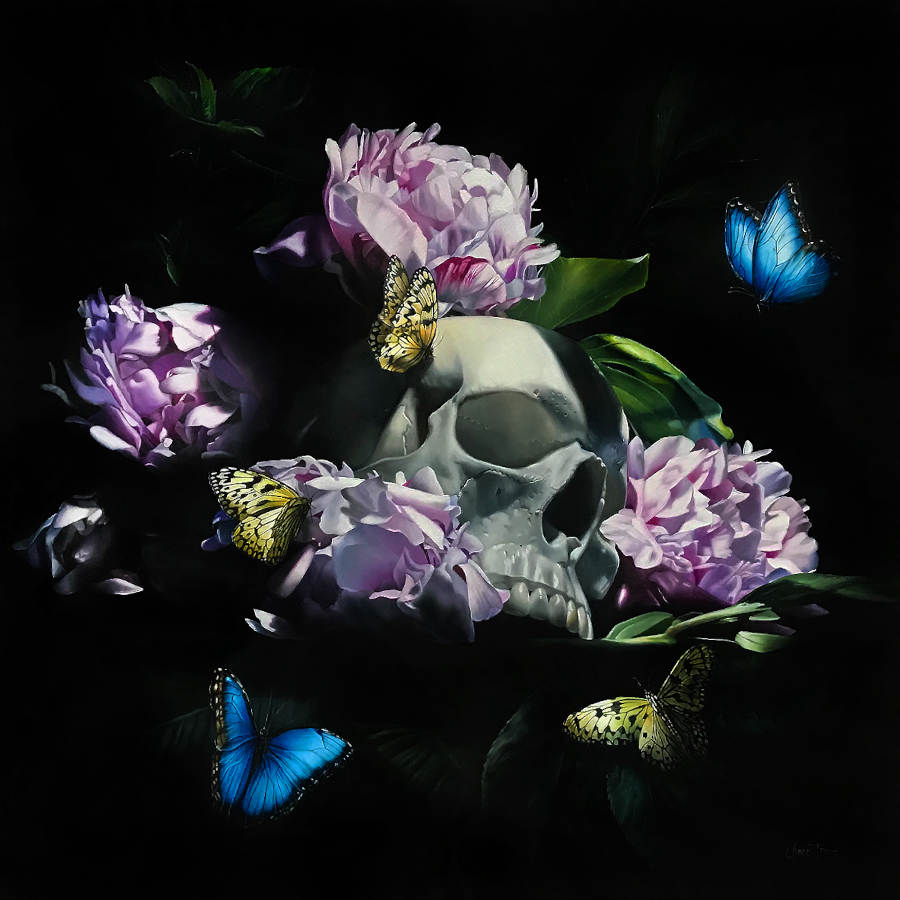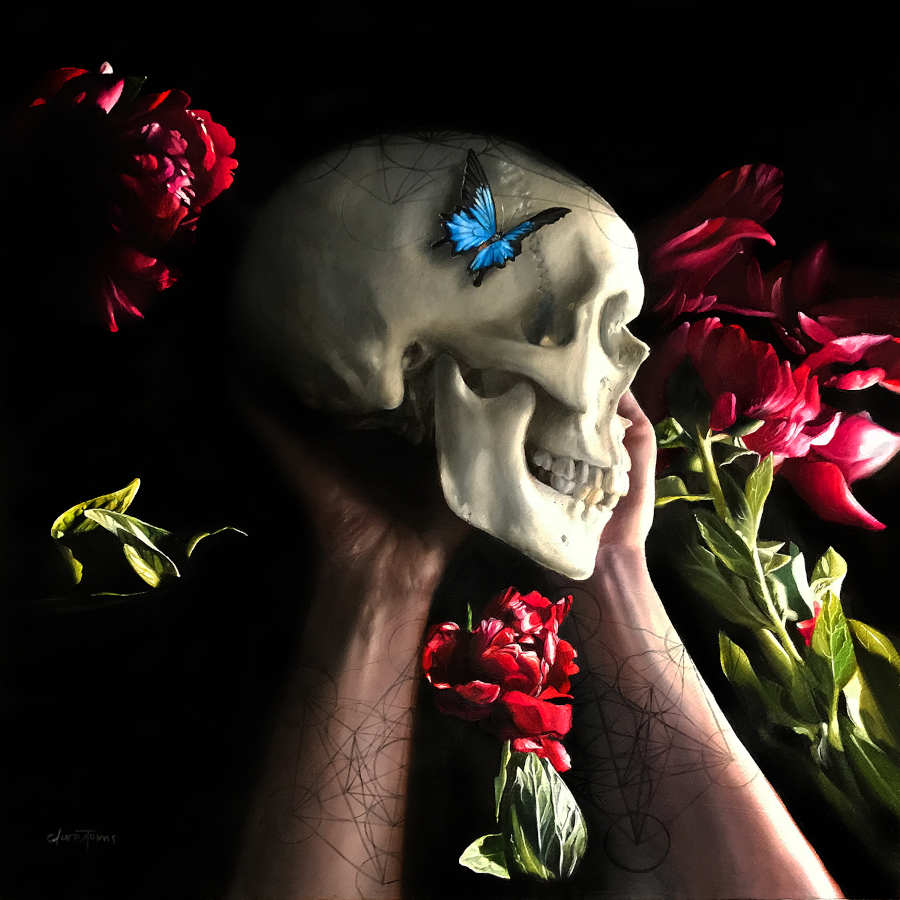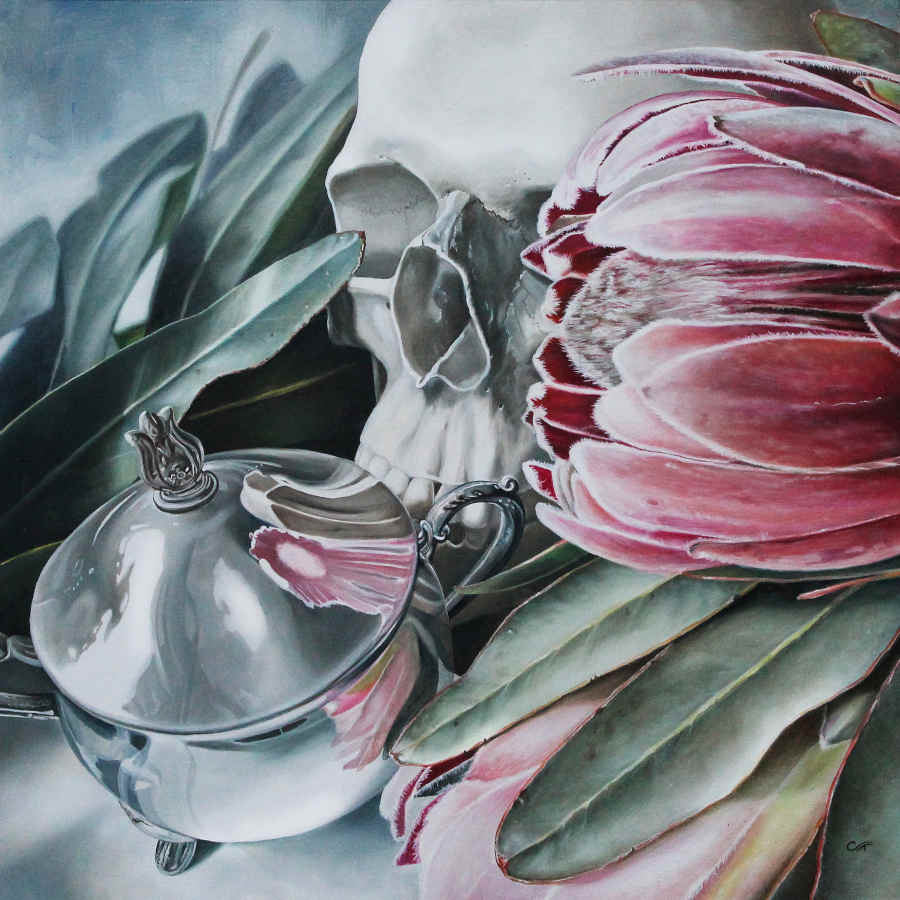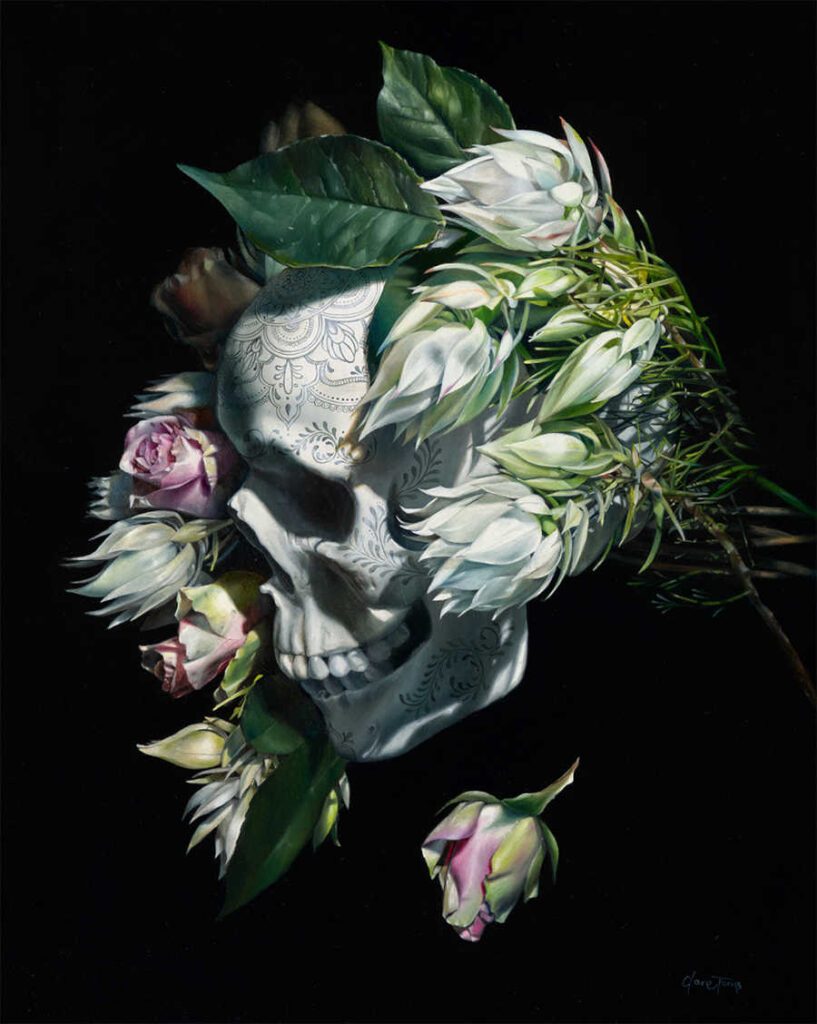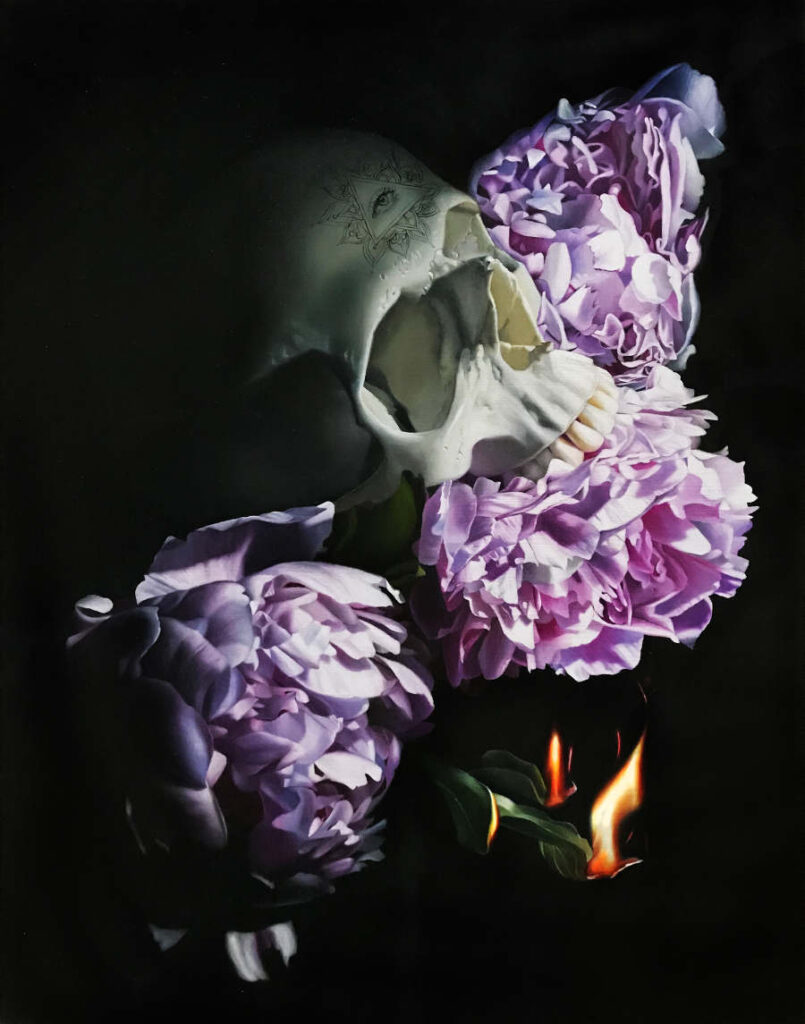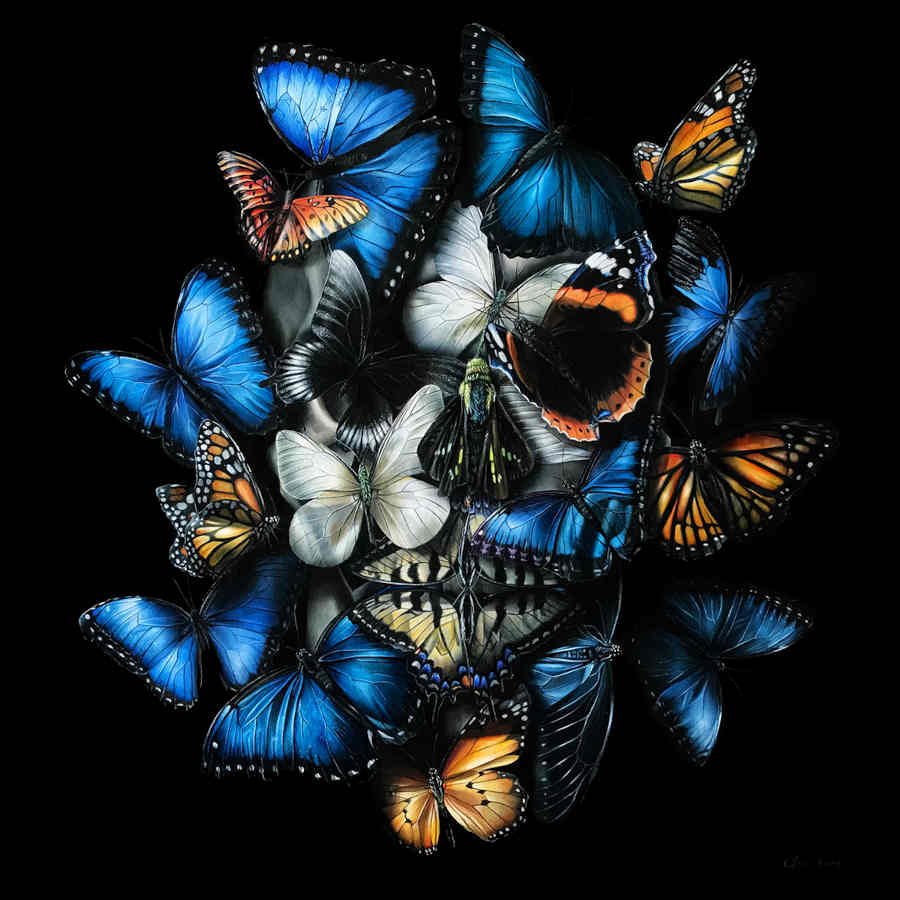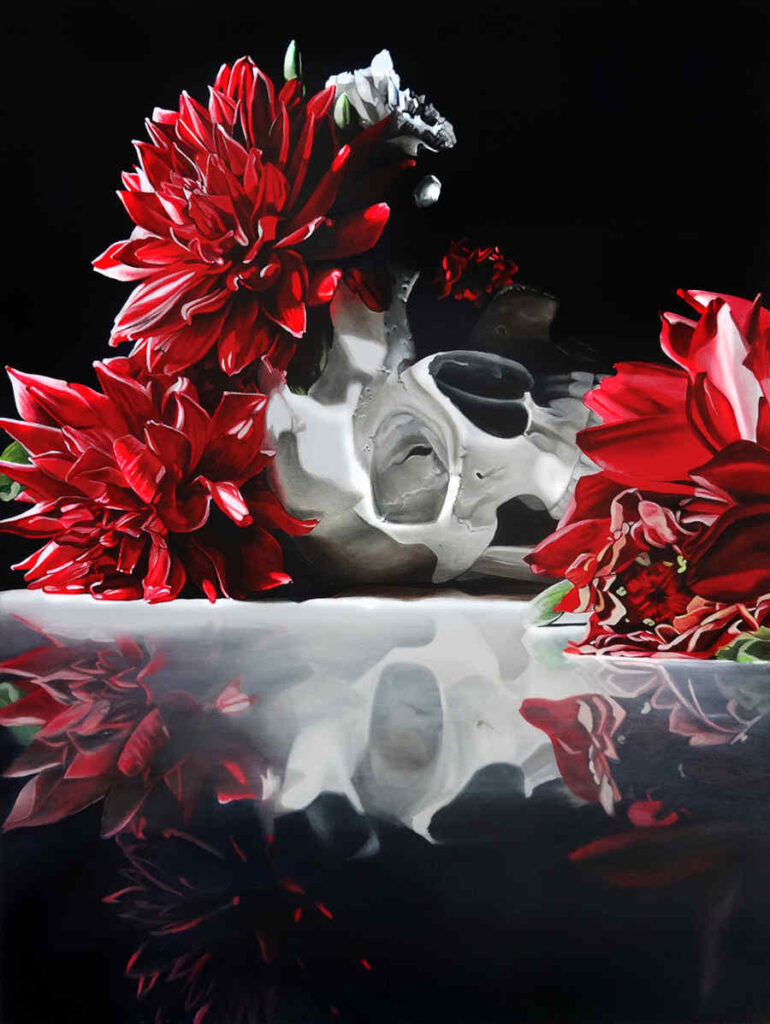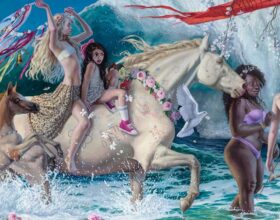Describing herself as reflective and curious, I can see these traits mirrored in Clare Toms’ rich and almost ethereal paintings. Her floral skulls seem to parallel life and death, gently lit and vibrant against the jet-black backgrounds. “I sense a strong feeling of being untethered if I spend too much time without painting.” She tells me. And I believe it.
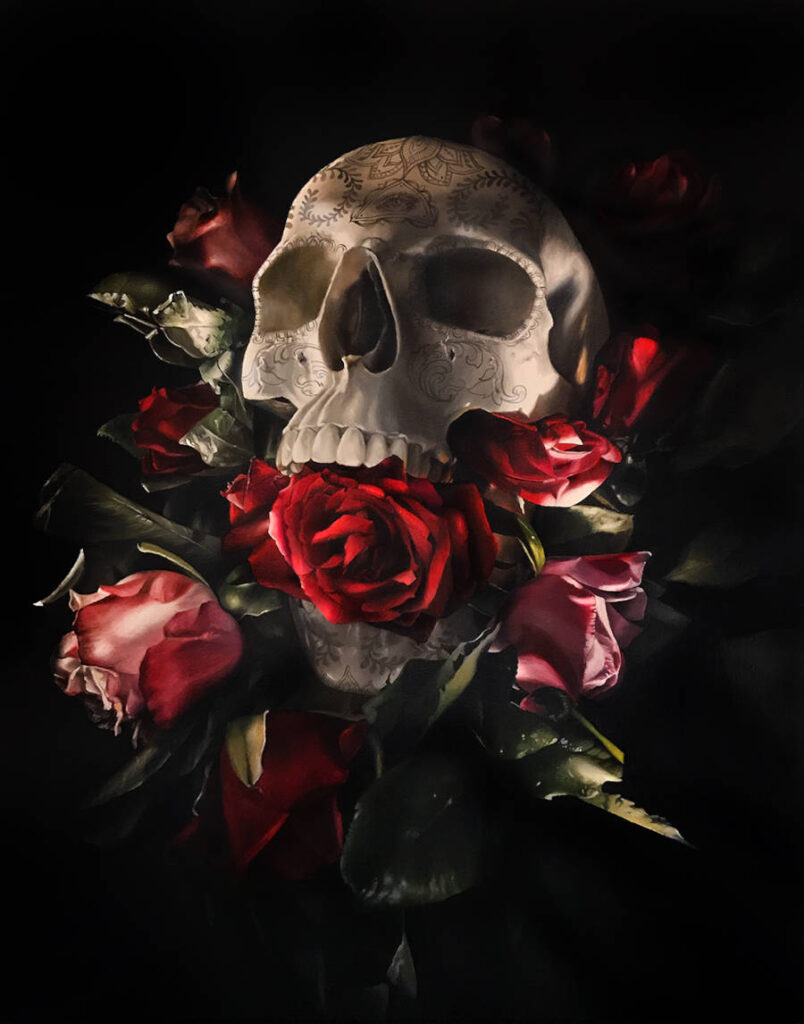
Interestingly, Clare Toms spent many years based between Melbourne in Australia, and Mexico. It’s easy to appreciate her influences from these vibrant and wild places. The vastly multicultural layers of Mexico, raw and magical with a hugely spiritual ethos, celebrates beautiful versatility. (And, as Clare tells me, perhaps more special of all – the place her husband was born.) Alongside that, the city of Melbourne has encouraged creativity on entirely different levels. Known for its arts scene, valued galleries and artists spanning many art forms and mediums, and you can see how one can be constantly fed in inspiration.
But this is only the tip of the iceberg. I wanted to find out more about Clare Toms and understand the influences behind these striking paintings. Thankfully, she was willing to chat! So settle down and delve with me into old sanctuaries, bereavement, our interconnectedness with the environment, and much more:

Swarm, Thinkspace Pow Wow Hawaii exhibition (2020) 
Metatrons Cube, Copro Gallery BLAB! Exhibition (2018)
Interview with Clare Toms
Thank you for taking the time to speak, Clare! Let’s start at the beginning. I know that you completed a Bachelor of Fine Art through the Queensland College of Art, Griffith University in Brisbane; why did you want to study the arts?
Art has always been an important part of my life. I grew up in a regional area of Australia and there was a community of artists in the town. From a young age, my brother and I used to go to art classes with a local artist in an old, brick butter factory. It was a great sanctuary. The building had many nooks and rooms. And it was cold because the walls had been built so thick. There were artist studios including a lead-lighter and a guitar maker, and we would have different classes in all the different spaces.
The artist who taught us is incredibly talented. We were given an in-depth art education in all types of mediums, all the fundamentals and many opportunities to explore. We’d put on exhibitions, which we would hang ourselves, invite guests and put prices on our work for sale. We were still primary school age, but she had such a belief in us all. We put on some great shows and the education we had was so valuable.
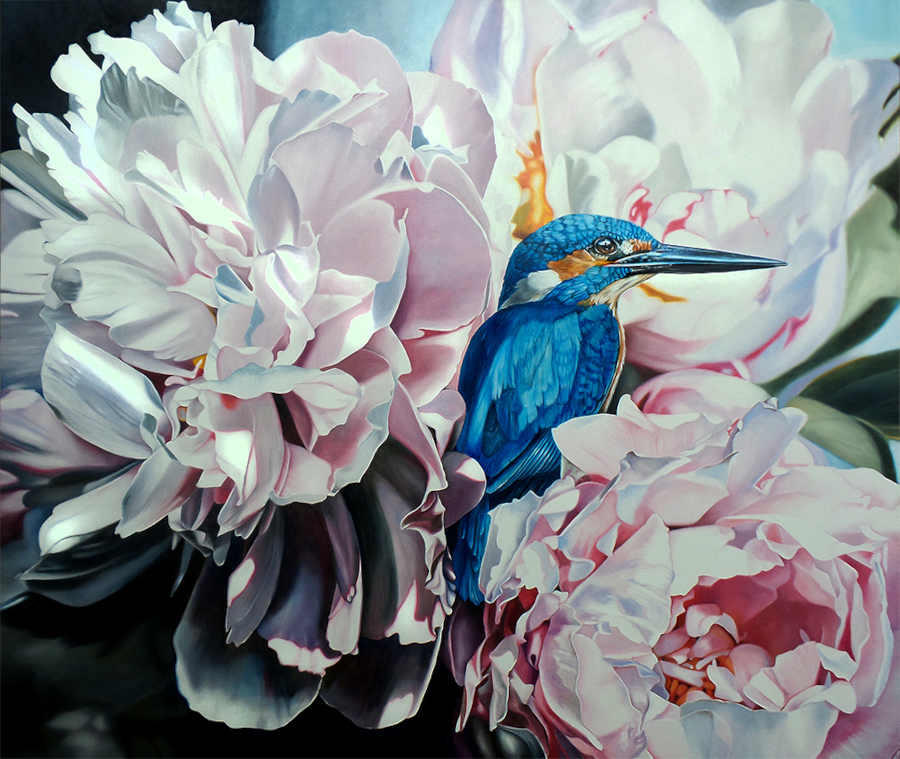
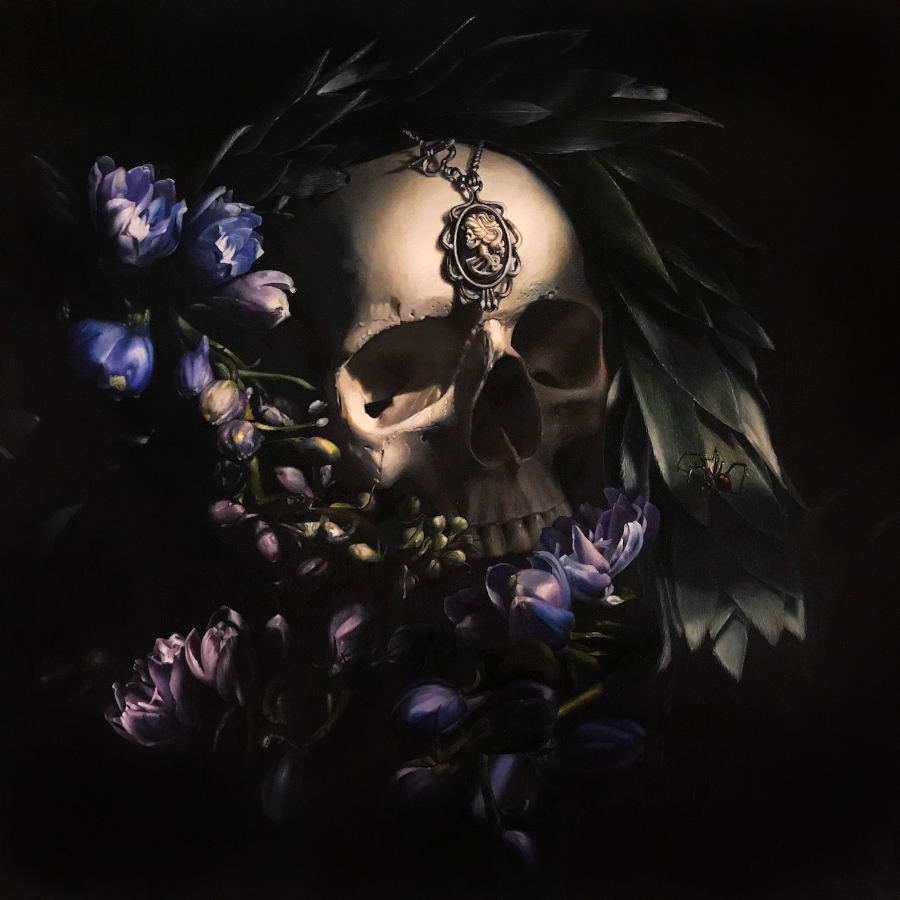
Growing up, my parents have always been really supportive and encouraging which I’m hugely thankful for. Whilst I did art classes outside of school, I actually didn’t continue art during my secondary school until the final two years. I was also fortunate enough to have my work selected in the ‘ArtExpress’ prize (an art prize in Australia for graduating art students).
The Archibald Prize 1999
I remember standing in front of artist Evert Ploeg’s portrait of Deborah Mailman (Oil on Jute, 1999). It was a finalist in the 1999 Archibald Prize (winning the People’s Choice Award). There was something about that place, I marvelled at that artwork and I knew I wanted to be a painter. It was a language that made sense to me yet was so elusive and inspiring. I knew I had much to learn but it resonated deeply.
I get a profound sense of awe staring at the brushstrokes of old paintings, the marks made on artworks, historical carvings and artifacts. To know that each of those was made by a hand right there on that surface decades and centuries ago – each is a time capsule to the past.

The Duo (2014) 
Guardian, Thinkspace Gallery, Moniker Art Fair London (2019)
A defining moment
After a couple of years working and studying in another degree, our worlds were shattered with the news of my brother’s passing. He was the gentlest soul, an avid mountain climber, downhill mountain biker and most happy when in nature. He had this deep wisdom that seemed to be built into him right from birth. Even as a toddler, he would come out with these profound understandings of the world. He’d been in New Zealand for a climbing trip when we received the news that he suffered a fatal fall from the summit of Aoraki/Mt Cook. Life was immediately turned upside down.
Whilst I had always been painting and drawing throughout the years, it was at that time I knew I needed to change my course and go straight back to art in a more formal sense. It was clear that it was the most important path for me to be on. I began my Bachelor of Fine Arts the next year.
Looking back on those years studying Fine Arts, it became the deepest form of creative expression, grief therapy, learning, unlearning and growth.
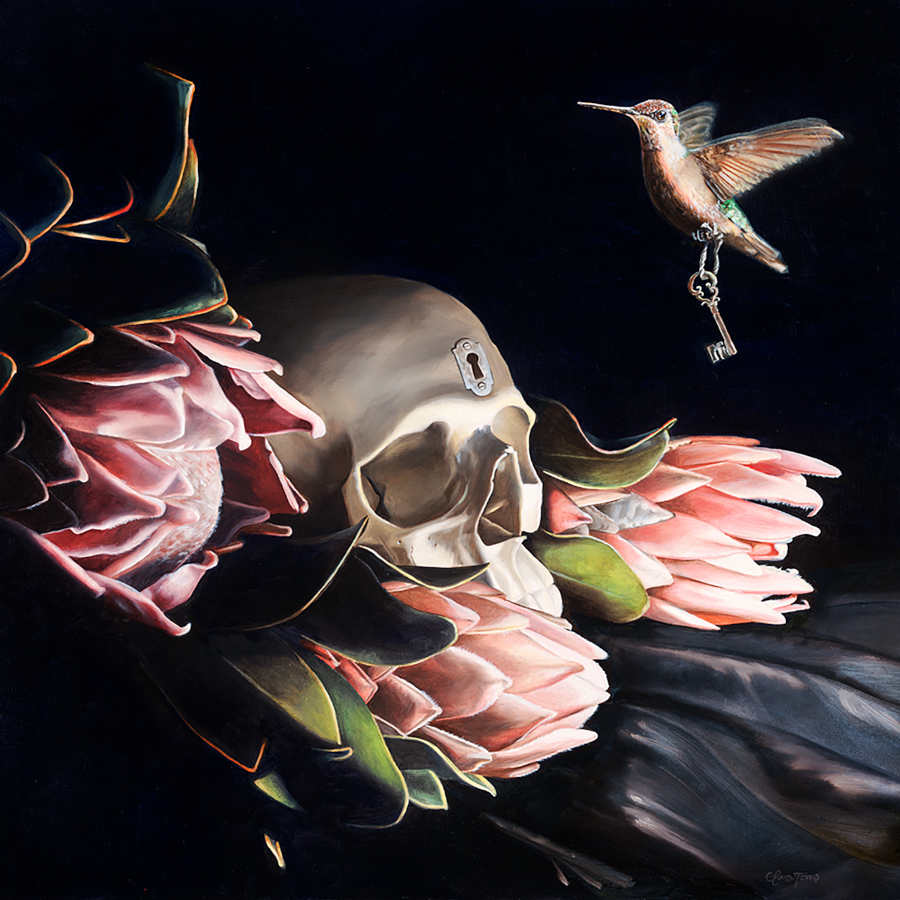
A philosophy in painting
Have oil paints always been your main passion?
Through art school and university, I explored various mediums over the years but was always drawn most to oil painting. It can be good to experiment with a range of materials – each of them teaches you something new. There is a different type of magic in all mediums. As a result I’ve found it beneficial to use various materials from time to time. I feel that oil painting is definitely for me though.
For me, painting is a meditative practice and time melts away – hours can pass in what feels like minutes. But equally, it is highly challenging: each painting teaches you something.
A painting lecturer of mine used to describe it as ‘being in the boxing ring, it’s you against the painting – some rounds you’re ahead and some rounds you’re behind’. There is a truth in that, and the challenge exists in parallel to the meditative quality. It’s hard to describe.
Painting is a unique form of self-expression, where you can communicate complex ideas without language. It’s the old adage that I paint because I don’t have the words. I sometimes feel as though the works come through me and I’m just the tiny cog part of a larger narrative which isn’t always in my consciousness, a larger force is at work. Other times, I respond to what is happening around me with my painting in a more direct sense.
Installation and sculpture
Going with the idea of art coming through you, tell me more about your photography and installation practices. Do these feed different parts of your creative soul?
They do, mainly photography. The installation pieces I have done involved assemblage of found objects and sculptural pieces. I exhibited some of these works including in an arts festival in Mexico City years ago. Most of all I paint, but I practice photography more regularly than installation as part of my process. I use it as another creative outlet. But my main area of focus is definitely oil painting and that is what I do most.
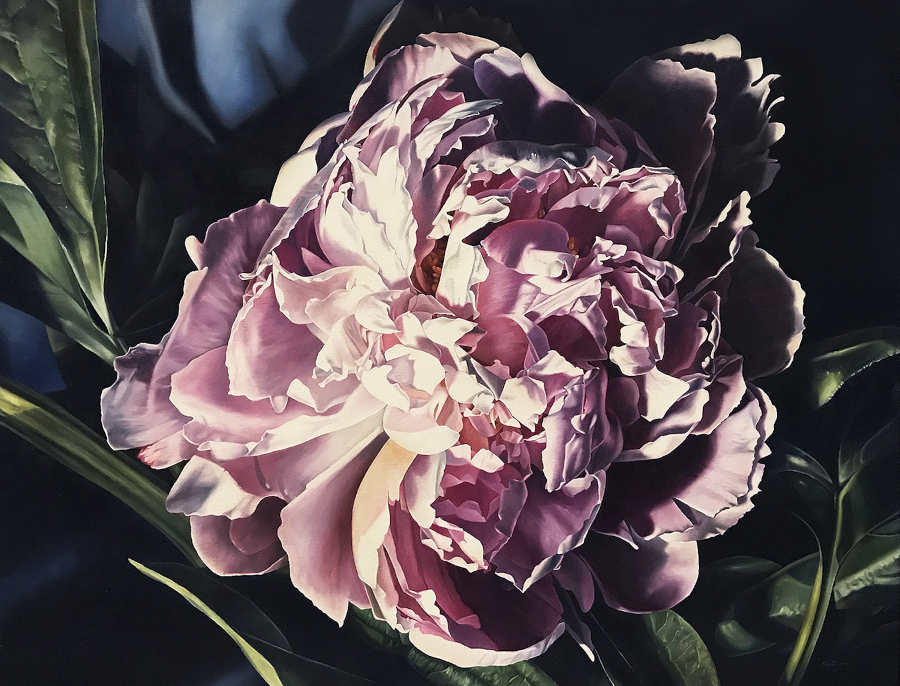
The beautiful and bold
Your more recent paintings have this beautiful, bold depth to them through chiaroscuro, with this concept of juxtaposition also reflecting through your skull and flora series. These paintings often remind me of the old, dramatic Masters of Art such as Caravaggio; would you consider these artists an influence to you, personally?
I have always been intrigued by light and inspired to explore it in my work and I’ve been drawn to a range of painters at various times over the years. Often, it’s those whose painting styles differ to mine such as Jenny Saville, Lucian Freud, Basquiat, Francis Bacon, Chuck Close. Through art history studies at university, we researched and learnt about a range of art practices from different regions and time periods, including the old masters and oil painting techniques from around the world.
However, I still feel humbled by how much there is yet to learn and experiment with: both in terms of expanding the narrative that is taught in art schools and really acknowledging the depth of art history from a broader range of perspectives, as well as technical learning with the medium of oil painting itself.
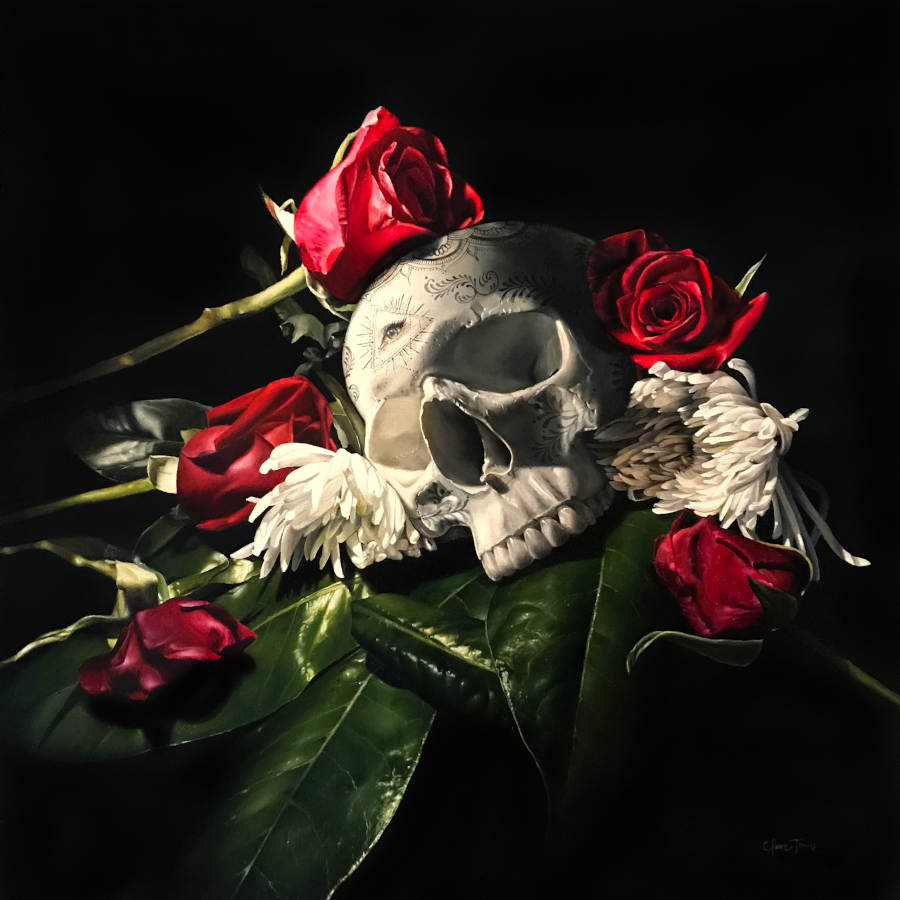

Galaxia, Static Medium Exhibition at Galleries 1988 (2018) 
Talisman, Beinart Gallery Antipodes Exhibition (2020)
The skull-flora series
I think learning is a never-ending journey! It seems your path so far has led to you your skull-flora series of paintings. When did this series start?
For the last few years, I’ve been exploring this series in more detail both conceptually and technically and am really drawn to both as subject matter. They have tended to weave their way in and around my larger body of work over the years and will likely continue to morph and reappear in various ways.
The skull-flora paintings certainly create a stark awareness of life against death, parallels, yet as one sharing the same page (or in this case, canvas). Similarly, your flora paintings are just as powerful. I love how abundant your flowers are, bursting open as if in their last, fullest moment of life before the petals fall. Has your consciousness of life and death driven you to paint such images?
That’s a beautifully poetic observation!
There are currents of that which flow underneath my work. I am intrigued by that which we can’t see, but can feel – transience, spirituality and human essence, and our interconnectedness with the environment. In saying that though, I try to allow space for the viewer to create their own relationship with my work. I understand that the symbolism associated with memento-mori can be divisive. In my work, I am not necessarily associating skulls purely with death as I observe and study their form. In many ways, they have moved beyond that for me to symbolise much more.
The way I use light can make the work both conceptually and visually feel dark. However, working within a memento-mori symbology, generally the works speak to me of hope and of embracing life, the parallel that death is, but also isn’t, a finality.
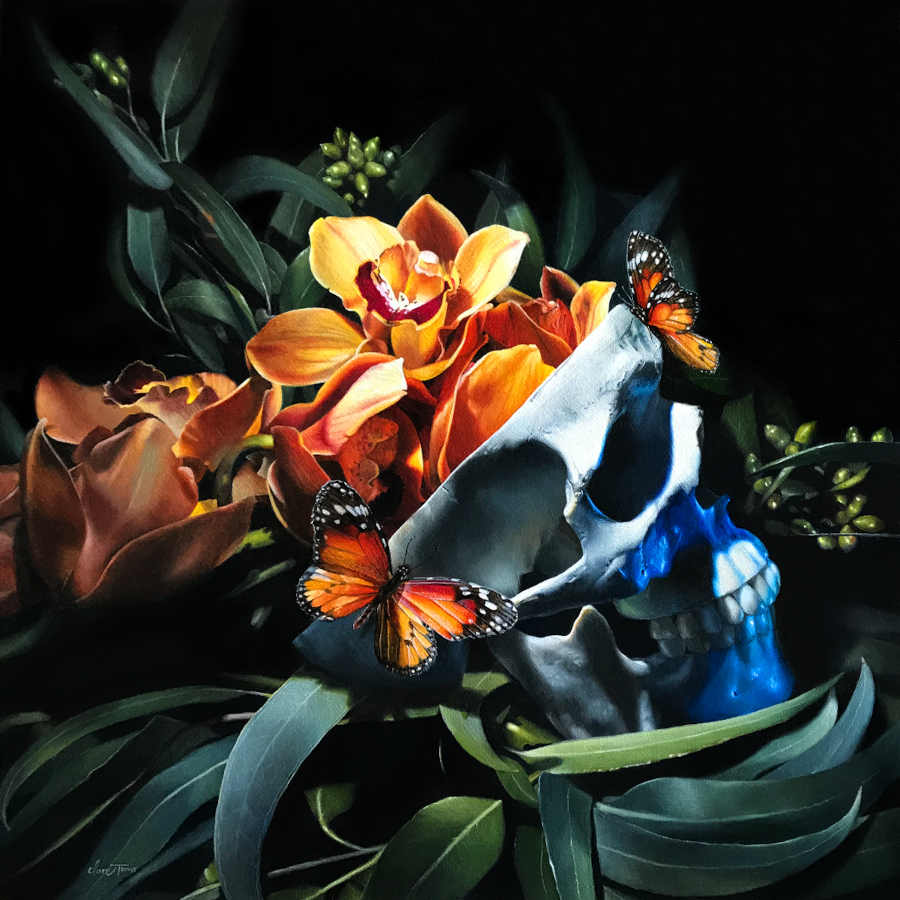
From vocational teaching to fundraising
Have you had many more creative experiments along the way to get to where you are now?
I’ve worked on various creative projects over the years such as teaching visual arts at TAFE (a vocational education system in Australia), and working with primary schools as part of an intercultural art exchange program between Australia and Peru. At one point, I was a teacher’s aide in primary schools and in a literacy and numeracy program for Indigenous primary school students. International projects included a collaboration project with another artist, and having printed work exhibited as part of a travelling exhibition which traversed the Trans-Siberian Railway (Beijing to Moscow).
A special project from 2017 was to help pull together a fundraising limited edition print set to raise funds for ‘Fondo Semillas’, a non-profit organisation focused on improving women’s lives in Mexico. This was in response to the major earthquakes which impacted Mexico in 2017. Static Medium in LA supported the process and coordinated everything. The artists who contributed artwork for the limited edition print set fundraiser were Saner, Miss Van, Josh Keyes, Sylvia Ji, Alex Garcia, Luis Sanchez, Monica Loya and myself.
My first job, which I did throughout high school and then again when I went to University, was picture framing. I actually love the whole process from building the frames, creating mat boards, glass cutting, joining etc. The construction, creative and archival elements of it made it a good complement to my own practice. I’m often drawn to the old, elaborate and handmade frames as well as the artworks themselves when walking around museums and galleries.
Digging a little deeper
It seems your life has always been steeped in creativity! Do you have any other interests outside of, dare I say it, art?
My husband and family are absolutely critical. Honestly, I couldn’t be where I am without them, their beautiful souls, and also the support of our friends. I am inspired by them every day. We love to travel and to be in nature as much as we can.
I am moved by the spiritual and supernatural elements of the world around us, and I’m often on some curious research pursuit of learning.

My husband is a designer and originally from Mexico. So, getting to museums and galleries, trying to cook traditional Mexican food at home and speaking both Spanish and English are all important to us. We stay closely connected to our families in both countries and around the world thanks to technology. It makes the physical distance feel smaller; even more important at this uncertain time, grieving the loss of a family member due to COVID.
Upon reflection of this question, mostly everything I do or spend time learning about tends to revolve around painting, or art, ancient history, science, and spirituality, and tends to end up feeding into my practice.
A profound time for change
The world is currently experiencing a time of great change and uncertainty. Have recent events altered your responses to art or the things that you want to create?
It is a profound time for change and to fight in whichever way we can – the time to stop accepting that which is unjust. It is time to stand up against the ingrained wrongs that become accepted and unchecked. This is an important time for art. Since the beginning of time, the role of art has been many things: to share histories, educate, present alternate paradigms and create change. The act of creation can heal parts of ourselves and provide an avenue to connect to others through shared experience.
I have felt the days passing fast in a strange vortex and things have felt uncertain. It’s been a very uneasy time for so many people, and it’s been a difficult headspace to operate within at times. There is much to advocate for and process, and much change to fight for.
My work centres on transience both physical and more intangible, and our interconnectedness with the environment. Interestingly, this is playing out in an unprecedented way right now.

Interbeing, Thinkspace Gallery Mother Earth Exhibition (2020) 
Equilibrium, EMSLA Prize Finalist
From the heart
They all do in different ways and for different reasons. Paintings are such a personal process and like most artists, there’s a piece of my soul that ends up in each work. A few snippets of insight include for the Copro Gallery booth at LA Art Fair in January 2020. I did a little piece really close to my heart entitled ‘Novia’. My husband and I got married last year in Mexico with a Mayan ceremony, and another ceremony conducted by both a close family friend of ours and my sister-in-law. There’s a lot in that piece; that painting means a lot to me.
For the Beinart Gallery summer group show ‘Antipodes’ in January 2020, I created my piece as a response to the Australian Bushfires. Growing up, we were wildlife carers, rehabilitating injured wildlife and releasing them back into the wild. Caring for the environment has always been a part of our life.
I recently painted a new work for Thinkspace Gallery for the group show ‘Mother Earth: We Are All One’. It meant a lot to be in the show given the alignment with my own conceptual approach exploring our interconnectedness with the environment, and the impact we are having on it. The current group show with Thinkspace, at the Museum of Art and History in Lancaster CA, is centering on mental health and suicide awareness. It’s a topic close to home for many of us. And whilst Thinkspace doesn’t always do themed shows, these two have been especially impactful to be a part of.
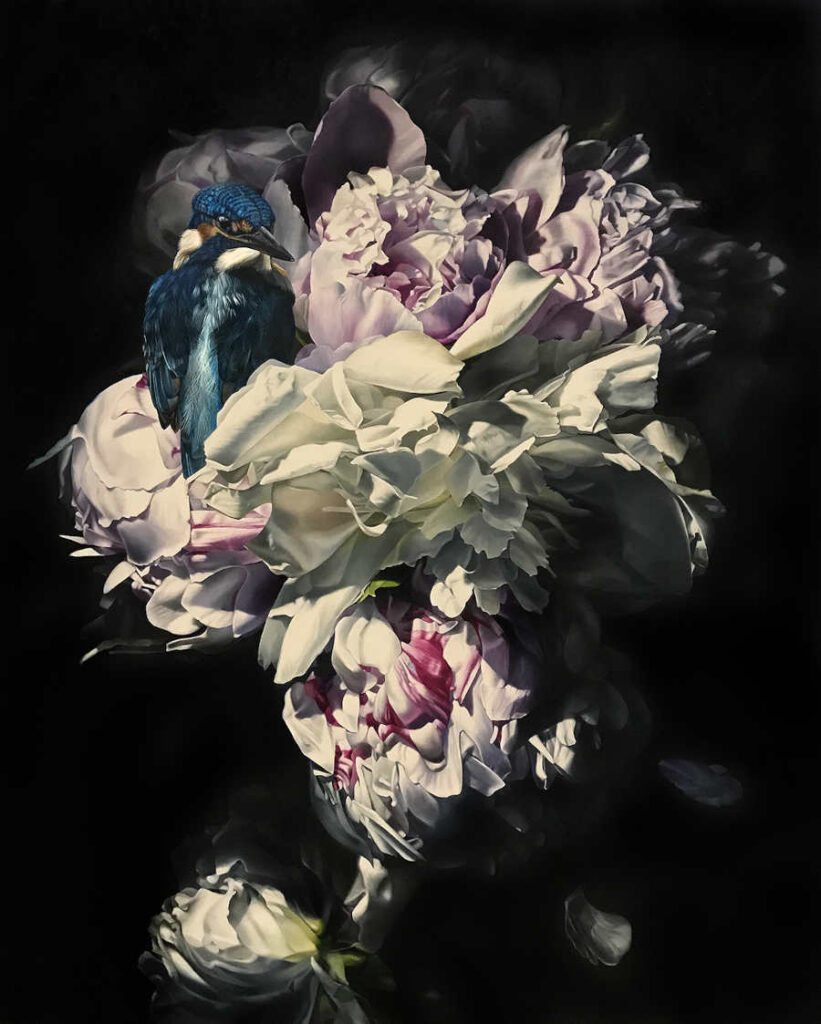
Celebration and aspiration
As well as your recent exhibitions, I know you are also a past Lethbridge 10000 art prize winner. Congratulations!
It was a huge honour to receive this prize. Additionally, the team at Lethbridge have been such a supportive gallery to work with. I really couldn’t believe it and was very humbled to receive the prize. The story behind why Gallery Director Brett Lethbridge created the prize itself is really moving as well, so it was significant and really special to be a finalist, let alone the recipient of the prize.
Honestly, the prize is well-deserved. It sounds like you’ve experienced what most of the art world has, which was a busy start to the year and then… the pandemic halt. But, we can’t stop completely! So to finish, what do you hope to gain in 2020?
For me, my art creation is a type of energy work. It’s the time when I process what I encounter and what takes place in the world. In its essence, it has a spiritual and healing element to it, and energies can impact on my painting practice in different ways. This year has really been playing out in unprecedented terms. I have found it to be impacting my work in a range of ways.
I’m currently working on a new series of work for a solo show at Beinart Gallery in Melbourne. This will be alongside Abigail Goldman and David Stoupakis opening in November 2020, which I am excited about. The new show is titled ‘Parallel’ – this has been the strangest time of exhibition preparation in terms of the weight of energy and concepts for the show, so I’m currently working as hard as I can pulling it all together!


